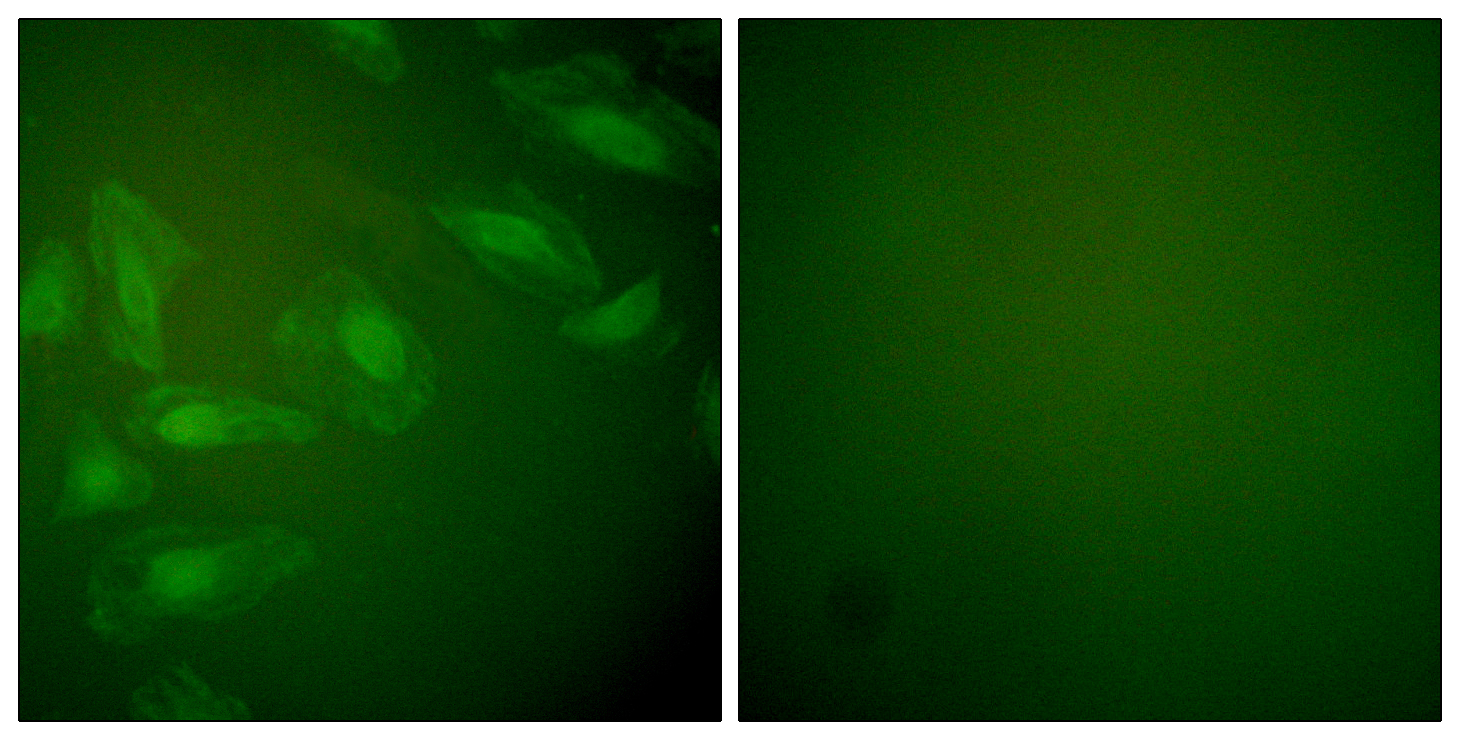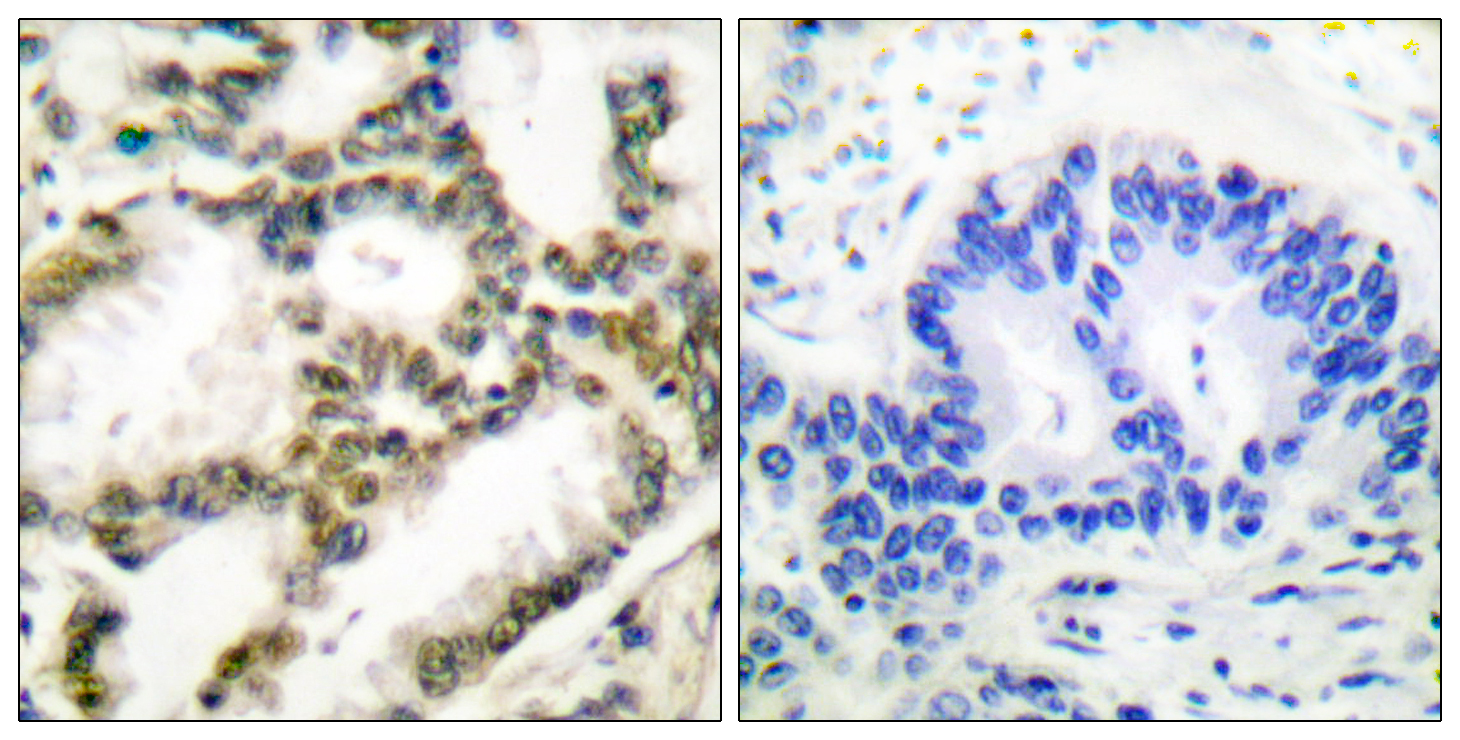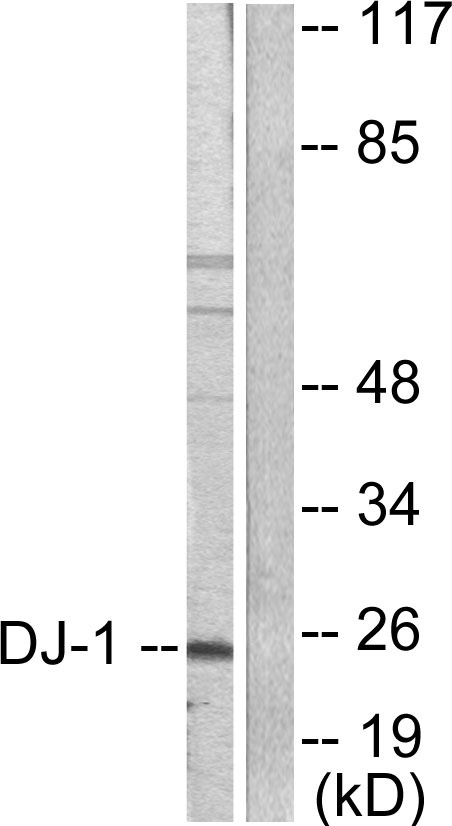产品名称
PARK7 Rabbit Polyclonal Antibody
别名
PARK7; Protein DJ-1; Oncogene DJ1; Parkinson disease protein 7
存储缓冲液
Liquid in PBS containing 50% glycerol, 0.5% BSA and 0.02% New type preservative N.
Human Gene Link
http://www.ncbi.nlm.nih.gov/sites/entrez?db=gene&term=11315
Human Swissprot No.
Q99497
Human Swissprot Link
http://www.uniprot.org/uniprotkb/Q99497/entry
Mouse Gene Link
http://www.ncbi.nlm.nih.gov/sites/entrez?db=gene&term=57320
Mouse Swissprot No.
Q99LX0
Mouse Swissprot Link
http://www.uniprot.org/uniprot/Q99LX0
免疫原
The antiserum was produced against synthesized peptide derived from human DJ-1. AA range:21-70
特异性
PARK7 Polyclonal Antibody detects endogenous levels of PARK7 protein.
稀释度
WB 1:500 - 1:2000. IHC 1:100 - 1:300. IF 1:200 - 1:1000. ELISA: 1:10000. Not yet tested in other applications.
宿主
Polyclonal, Rabbit,IgG
背景介绍
The product of this gene belongs to the peptidase C56 family of proteins. It acts as a positive regulator of androgen receptor-dependent transcription. It may also function as a redox-sensitive chaperone, as a sensor for oxidative stress, and it apparently protects neurons against oxidative stress and cell death. Defects in this gene are the cause of autosomal recessive early-onset Parkinson disease 7. Two transcript variants encoding the same protein have been identified for this gene. [provided by RefSeq, Jul 2008],
组织表达
Highly expressed in pancreas, kidney, skeletal muscle, liver, testis and heart. Detected at slightly lower levels in placenta and brain (at protein level). Detected in astrocytes, Sertoli cells, spermatogonia, spermatids and spermatozoa. Expressed by pancreatic islets at higher levels than surrounding exocrine tissues (PubMed:22611253).
细胞定位
Cell membrane ; Lipid-anchor . Cytoplasm . Nucleus . Membrane raft . Mitochondrion . Endoplasmic reticulum . Under normal conditions, located predominantly in the cytoplasm and, to a lesser extent, in the nucleus and mitochondrion. Translocates to the mitochondrion and subsequently to the nucleus in response to oxidative stress and exerts an increased cytoprotective effect against oxidative damage (PubMed:18711745). Detected in tau inclusions in brains from neurodegenerative disease patients (PubMed:14705119). Membrane raft localization in astrocytes and neuronal cells requires palmitoylation. .
信号通路
Parkinson's disease;
功能
disease:Defects in PARK7 are the cause of autosomal recessive early-onset Parkinson disease 7 (PARK7) [MIM:606324, 168600]. Parkinson disease (PD) is a complex, multifactorial disorder that typically manifests after the age of 50 years, although early-onset cases (before 50 years) are known. PD generally arises as a sporadic condition but is occasionally inherited as a simple mendelian trait. Although sporadic and familial PD are very similar, inherited forms of the disease usually begin at earlier ages and are associated with atypical clinical features. PD is characterized by bradykinesia, resting tremor, muscular rigidity and postural instability, as well as by a clinically significant response to treatment with levodopa. The pathology involves the loss of dopaminergic neurons in the substantia nigra and the presence of Lewy bodies (intraneuronal accumulations of aggregated proteins), in surviving neurons in various areas of the brain. PARK7 is characterized by onset before 40 years, slow progression and initial good response to levodopa.,disease:Defects in PARK7 influences susceptibility to amyotrophic lateral sclerosis-parkinsonism/dementia complex type 2 [MIM:105500]; also called amyotrophic lateral sclerosis-parkinsonism/dementia complex of Guam or Guam disease. Amyotrophic lateral sclerosis-parkinsonism/dementia complex type 2 is a neurodengenerative disorder with unusually high incidence among the Chamorro people of the Western Pacific Islands of Guam. Both amyotrophic lateral sclerosis and parkinsonism-dementia are chronic, progressive, and uniformly fatal disorders in this population. Both diseases are known to occur in the same kindred, the same sibship, and even the same individual.,function:Acts as a positive regulator of androgen receptor-dependent transcription. May function as a redox-sensitive chaperone and as a sensor for oxidative stress. Prevents aggregation of SNCA. Protects neurons against oxidative stress and cell death. Plays a role in fertilization. Has no proteolytic activity. Has cell-growth promoting activity and transforming activity.,induction:By ultraviolet irradiation.,miscellaneous:Cys-106 is easily oxidized to sulfinic acid.,online information:The Singapore human mutation and polymorphism database,PTM:Sumoylated on Lys-130 by PIAS2 or PIAS4; which is enhanced after ultraviolet irradiation and essential for cell-growth promoting activity and transforming activity.,similarity:Belongs to the peptidase C56 family.,subcellular location:Associated with mitochondria in some cells, particularly after oxidative stress. Detected in tau inclusions in brains from neurodegenerative disease patients.,subunit:Homodimer. Binds EFCAB6/DJBP and PIAS2. Part of a ternary complex containing PARK7, EFCAB6/DJBP and AR.,tissue specificity:Highly expressed in pancreas, kidney, skeletal muscle, liver, testis and heart. Detected at slightly lower levels in placenta and brain. Detected in astrocytes, Sertoli cells, spermatogonia, spermatids and spermatozoa.,
纯化
The antibody was affinity-purified from rabbit antiserum by affinity-chromatography using epitope-specific immunogen.




